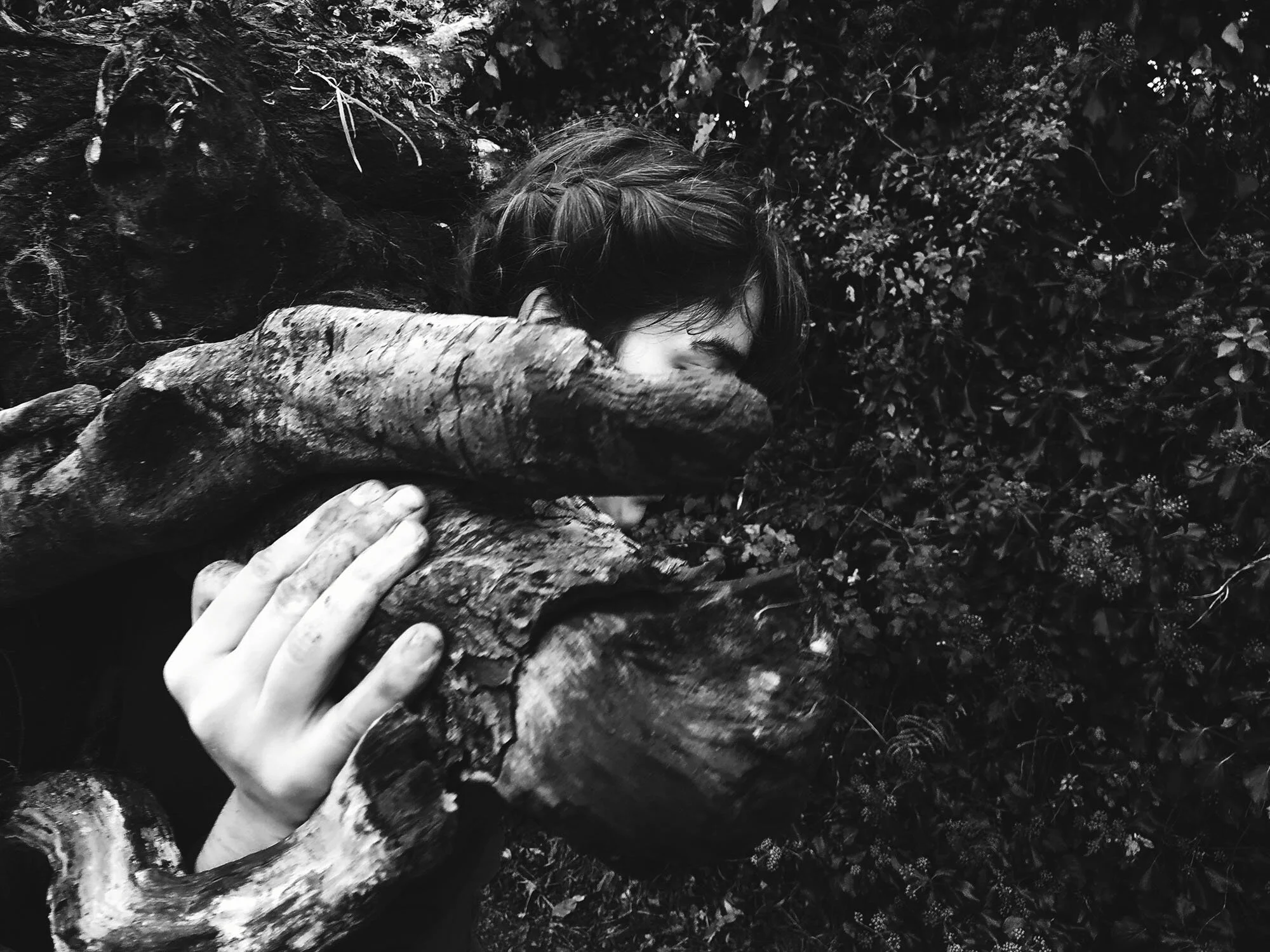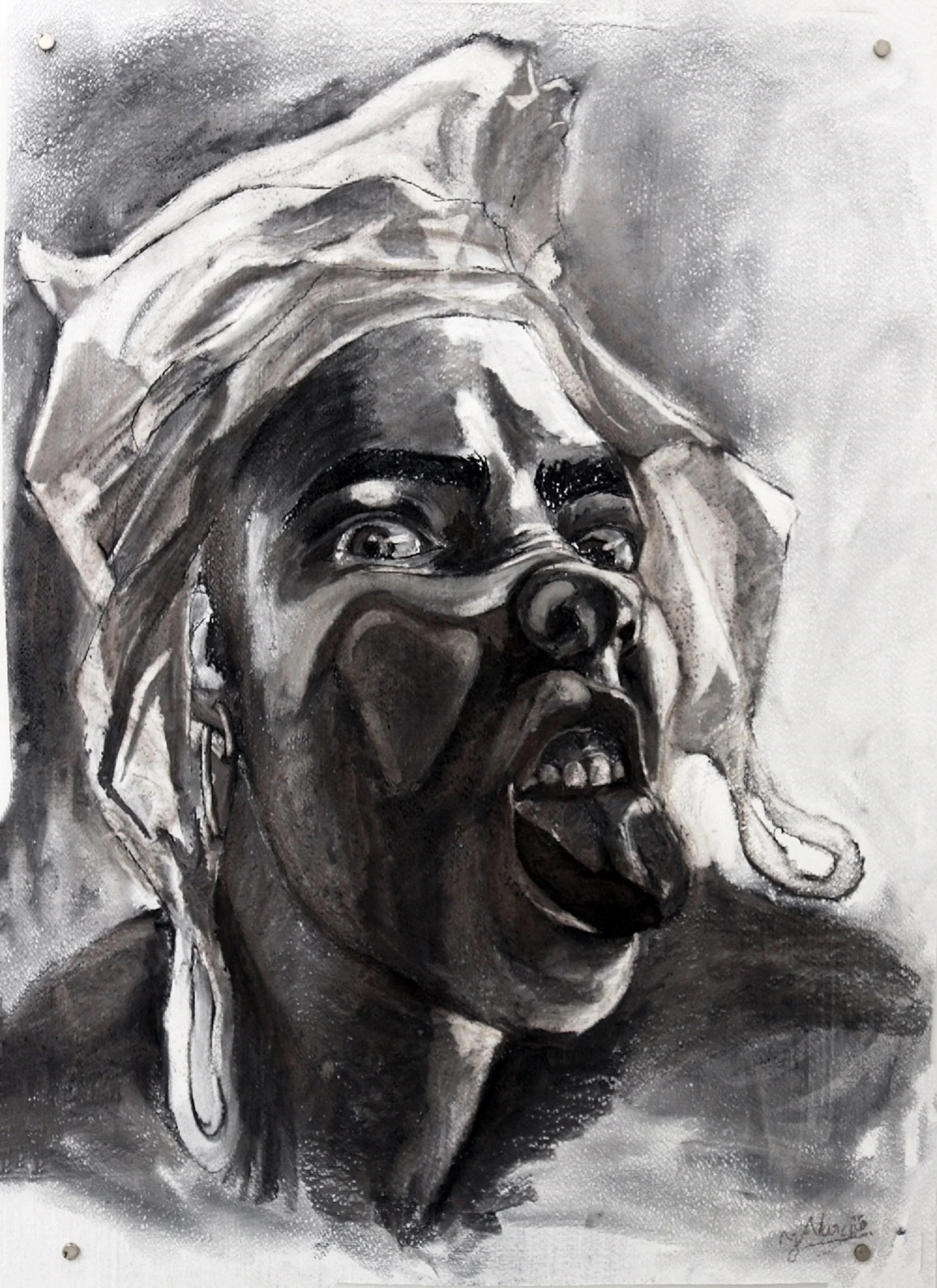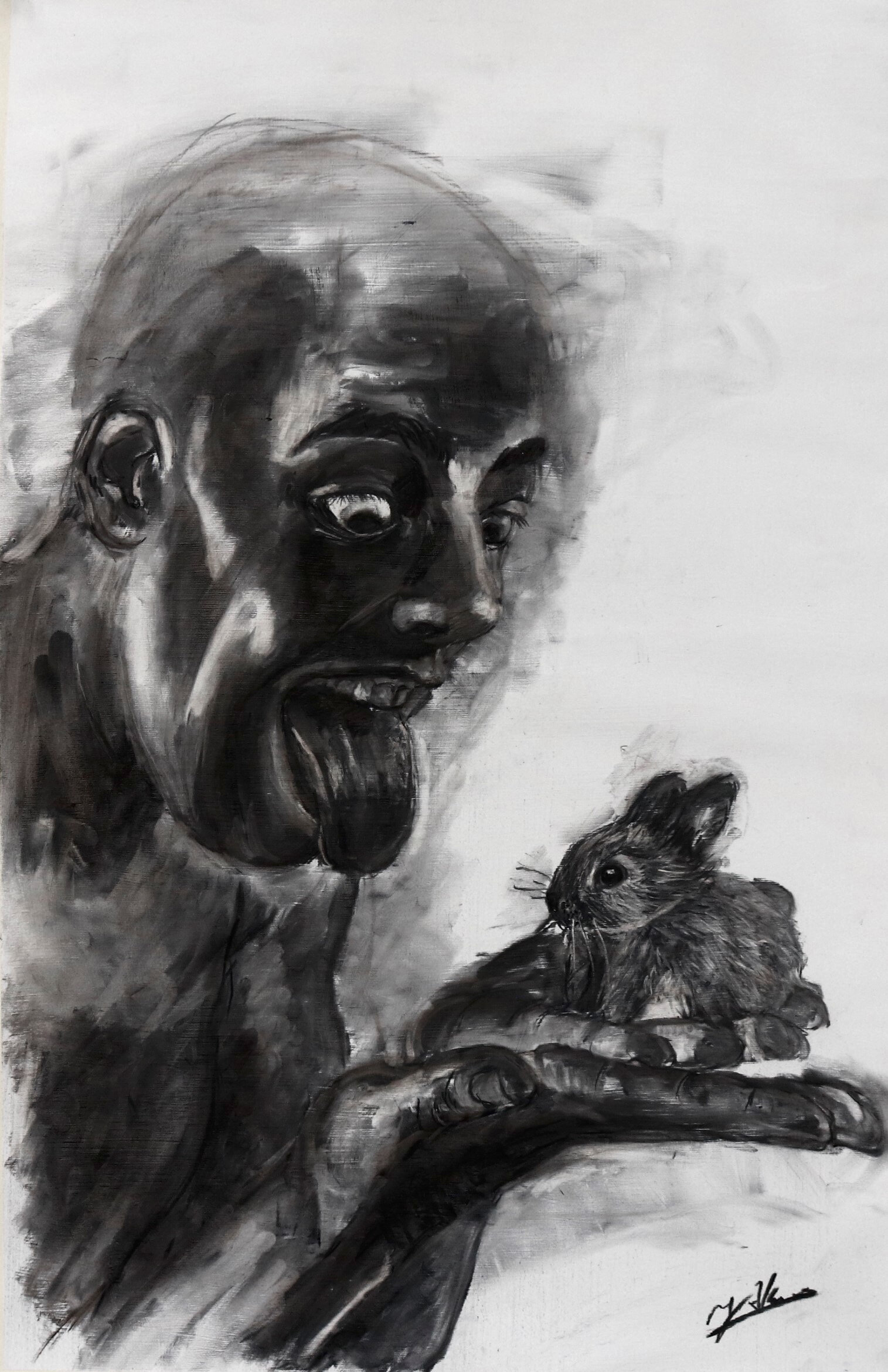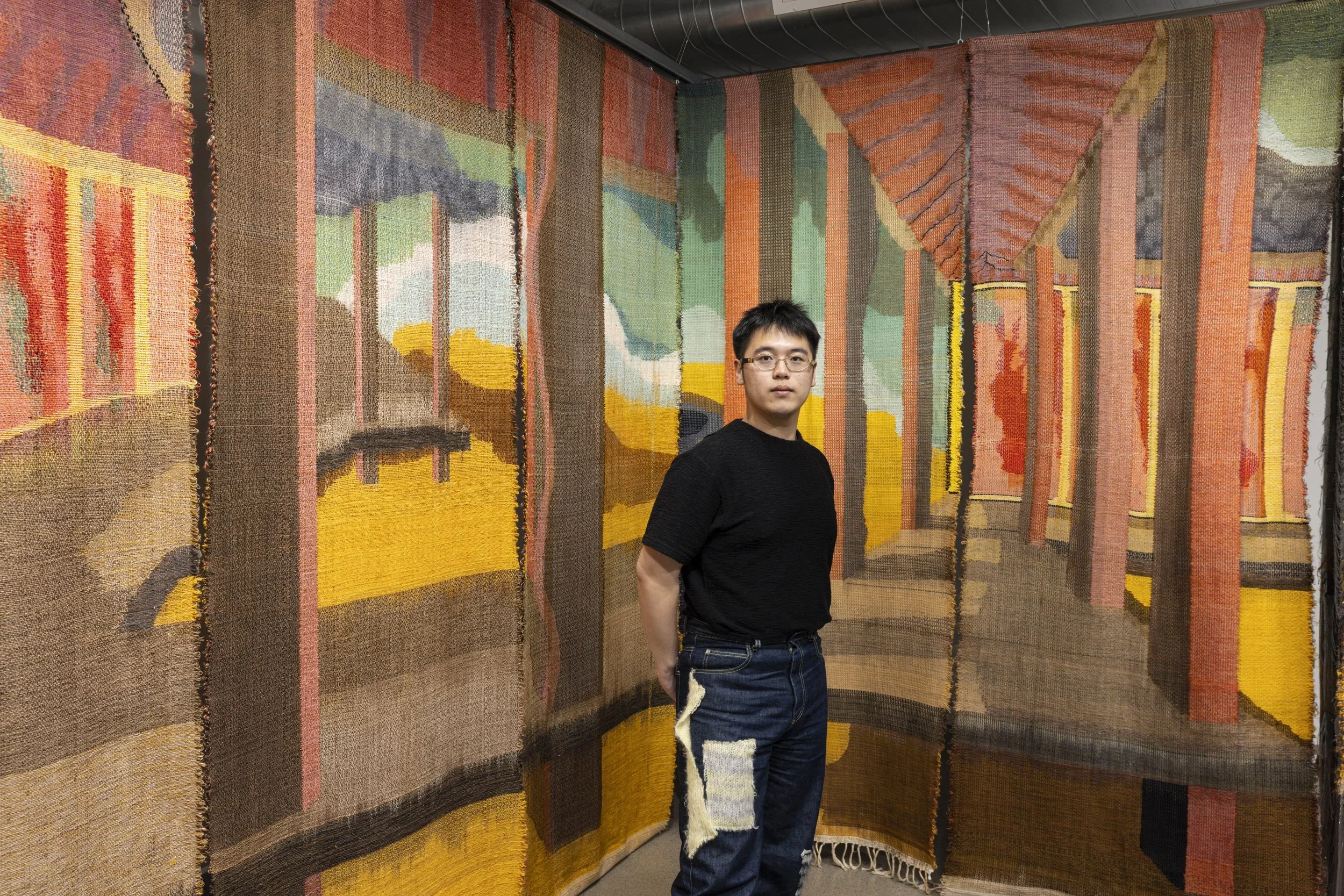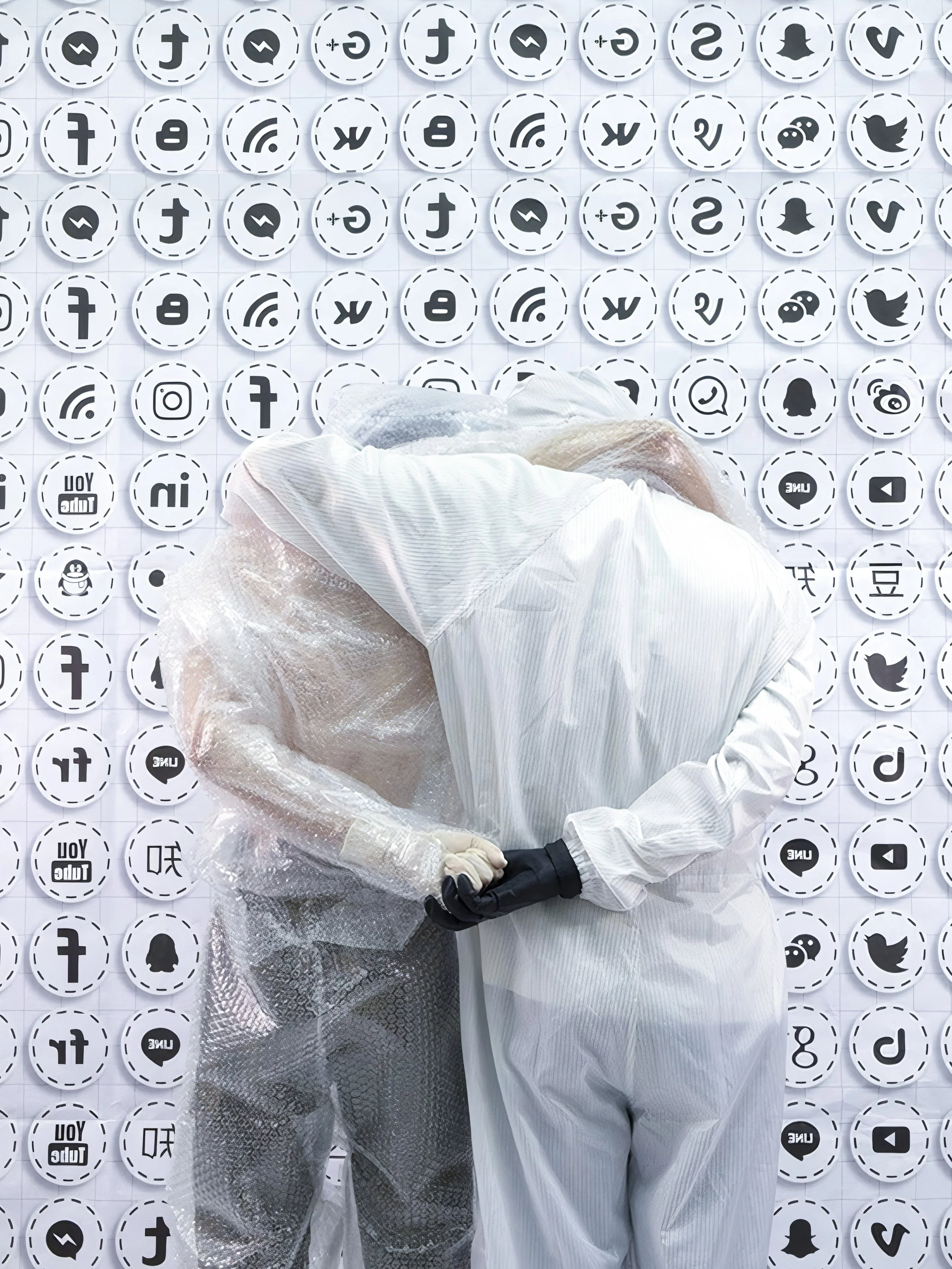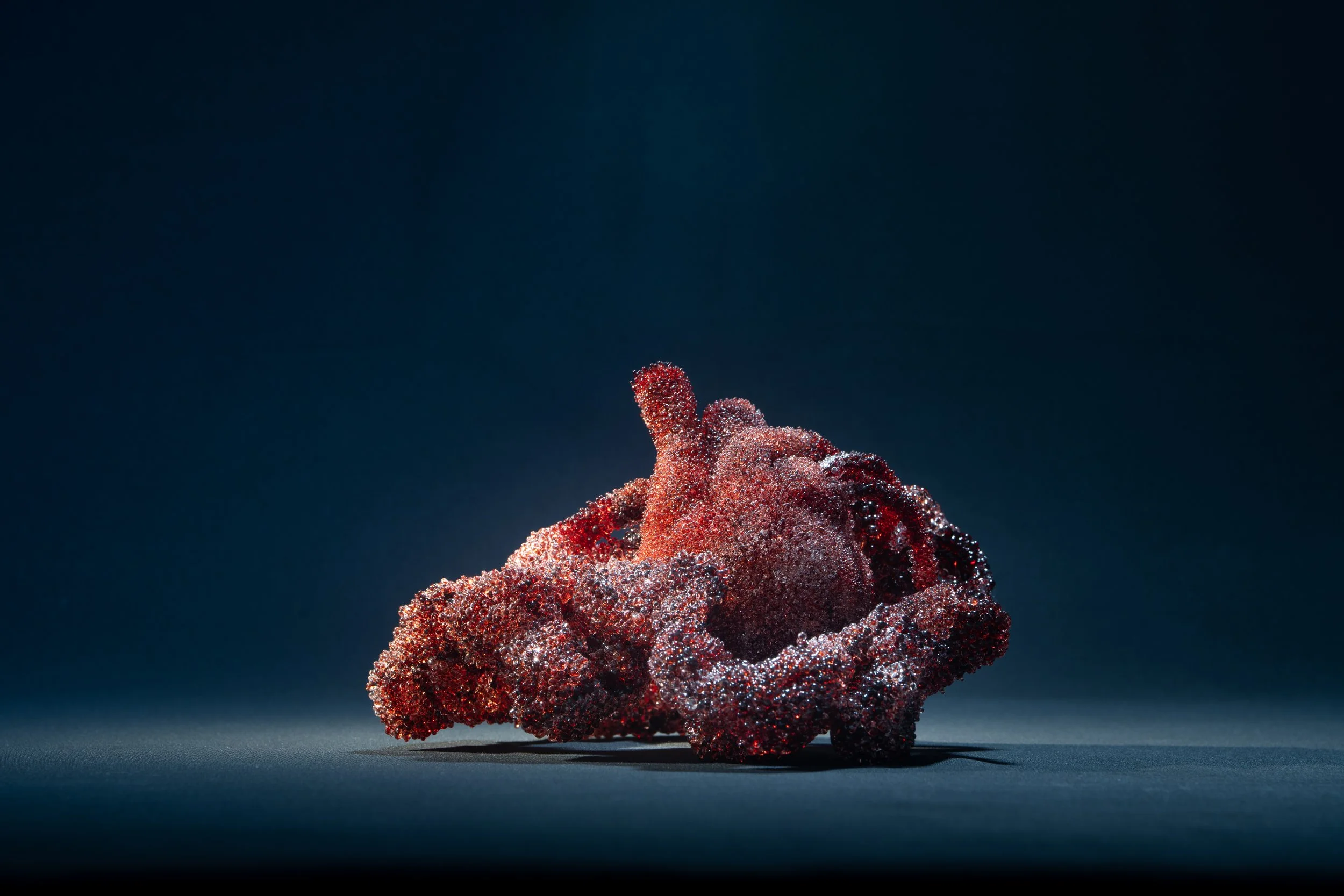10 Questions with Joana Alarcão
Joana Alarcão is a Portuguese artist based in Lisbon. She was a degree in Sculpture from The University of Fine Arts in Lisbon, a Level IV technician diploma in ceramics, and is currently taking her M.A in Art & Environment at Burren College of Art, Ireland. Her work was showcased in collective exhibitions and recently exhibited solo at the Faculty of Science & Technology in Caparica, Portugal. She also has her work showcase in online galleries, Wotisart and A5 Magazines. She has taken part in various residents and workshops, such as land art residences and Rural painting workshops.
Creating sculptures and charcoal drawings influenced by environmental practices, she explores human’s behavior and climate change from multiple lenses.
She brings awareness to the corrosive social alienation toward the environment and even human beings. The contrasts of how nature is consecutively part of the human species and human reaction toward it led her sculptures and drawings to be mostly human referenced and made with naturally made materials. The friction behind these two arguments is a major aspect of her practice.
Claim Against Alienation, Joana Alarcão©
ARTIST STATEMENT
Nature is perfect but not beautiful, and that includes humans.
Assessing the impact of climate change goes beyond the economic, political, and social lens; the real threat to the environment is the individual. Even though it can begin to be the solution. Human society revolved around myths and social hierarchies that can answer to unravel the question of climate change standpoints. Researching these patterns and the human cognitive system has been the primal goal of my practice. I work primarily with sculpture, charcoal drawings, documenting photography, and installation.
My sculptures are made with raw materials, clay, wood, and stone, mostly found in non-industrial areas, using traditional carving. The physicality of the body in space and its self-sufficiency is my way of relating more intimately with the materials. As a drawing practice, I create alternative realities where the subject is confronted when reaching insanity, doing grotesque or dramatized actions. These actions reflect our current ways of thinking and are meant to be understood as a possible outcome, using exaggeration as a medium. The charcoal used is fabricated personally to become involved with the methods used and its emotionally charged concept to explore the physicality of drawing.
Claim Against Alienation, Joana Alarcão©
INTERVIEW
Before talking about your art, could you tell us about yourself? Who is Joana Alarcao?
Well, sometimes it can be a challenge to try to separate the art from the artist.
I think that one thing that reflects who I am. It's reflected in my art. I spent most of my childhood living surrounded by the wild landscape of Peneda Gerês National Park. This shaped my relationship with nature - as I witness in the first person, how we could interact positively with our environment and how we can make an effort to destroy it.
I am a highly curious person, always interested in the weirdest things, not settling for the first layer of the problem. I am always researching new ideas and concepts that are reflected in my practice. I don't believe in just reading and researching the arguments I support; I am also interested in the controversy, as it feeds my ideas and strengthens my concepts.
As an individual, I follow the motto healthy mind, healthy body. Since a very young age, I practice sports, and that relationship with the body and always trying to improve matured to my sculpture practice.
This motto shapes who I am and makes me a highly detail orientated person, not wanting to leave any stone unturned.
Why are you an artist, and when did you first become one?
For me, art has to be more than mere sculpture or drawing. I think it has to feed the individual part of ourselves. It's a fanatic pursuit of something we believe truly. I have a demanding connection with everything I do; you can even call it an obsession. You have to let go of so many parts of yourself when trying to approach new exploration methods. The output should be thought-provoking for others and shape who you are in such a way, both mentally and physically, that you become other in some sense.
I think I first realized I was an artist when I was working on a project called Natural connections. My mentality regarding my practice changed drastically, I found what I wanted to work on and move from there. I decided I didn't want to work with machines anymore as I needed to give more of myself to my work, to see how far I could go. I still have a lot to grow, and I will surely change with my approaches, but that connection is what I deem makes me an artist.
In some of your sculptures, we can find wood, metal, and in some other works, we find animals and portraits layered into your drawings and paintings. Please, tell our readers about the symbology of your artistic expression.
My work is very materiality based, and I give extra importance to labor and how I can honor the material I work with. As my work is all about climate crisis awareness and human behaviors, I look at different myths and behavior patterns that are the pillars of our current society. Looking at religion and its symbolism and politics-taking in special regards the horrors of the 20 century in terms of human behaviors and how far we can go.
I am not nihilistic about the future, I am rather a realist, I take into consideration the role that culture, individual and nature took in major events that shaped our reality.
Claim Against Alienation, Joana Alarcão©
Claim Against Alienation, Joana Alarcão©
Regarding my drawings, I try to reverse the roles of humans and animals to talk about morality through our actions and give space for the public's interpretation. Approaching the mental space of climate awareness, I use portraiture and extreme emotions and behaviors. In terms of my sculptural pieces, I try to reach the planetary boundaries, the physical part of humans, the touch, and the smell, using natural materials to combat the alienation from the body and the environment around it.
Non-Plasticarian, Joana Alarcão©
Lost Morality, Joana Alarcão©
Non-Plasticarian, Joana Alarcão©
Do you have a role model that you've drawn inspiration from when creating your art?
I don't think I have a role model per se, but there are two artists that I can say shifted my way of thinking and see my work. This being Joseph Beuys and Maarten Vanden Eynde.
Joseph Beuys uses dark and dramatic aesthetic resonates with me, and I am quite drawn to the call for action of the monumental work 7000 oaks. Where sculpture became a public event. I am fascinated by his aesthetics and the use of materiality and powerful and cluttered installations.
Recently I came across the works of Maarten Vanden Eynde, moved by the yearly works of land art, where Eynde, symbolic and physically, restore the cracks on a desert floor, and by one of his latest works, the last human, where the philosophy around the interaction between human and nature change drastically, becoming a representation of a darker but somehow adaptive future.
Something is intriguing and holistic when dealing with such heavy subjects and still resonating with the audience the way they do. It's always a complex aesthetics, but that conveys the message; it's a line between order and chaos where the audience can go through, deciding each path to take.
This language is something I explore in my practice. Looking for a way that my work resonates with the public but also that I speak of the evolution of myself as an individual. Letting it be a reciprocating relation.
Can you tell us about the process of creating your work? What is your artistic routine when working?
My practice is very research feed. I normally start by researching and reading different articles and books that eventually become the work's stepping stone. As I do sculpture and drawing both, have a very different routine. For the sculptures, because it is such a labor-intensive practice, I find the material. then I use the traditional academic method of doing a small clay maquette as a reference for my work. As for the drawings is more of an intuitive process. I have a concept that I want to explore and try to convey it with a touch of freedom.
By using this approach, I can incorporate both practices without being overly overwhelmed. This being said, I still give myself space to explore different planes of making and try not to be too attached to one method. Otherwise, I would deprive myself of the ability to grow. The only thing that I consider essential and unchangeable is not using machinery to help me, as it is an important aspect of my work philosophy.
Claim Against Alienation, Joana Alarcão©
Please tell us about your relationship with nature and your body.
I grew up surrounded by nature, understanding the physical plane's limitations, so it was a spontaneous action to consider my body to be more than a vehicle. Our body is the physical representation of who we are as individuals and as a species. Both are something I want to honor. As I said, I am a realist, being well aware that nature is out to get us, as it is to every other species, I also consider that I am connecting with nature by connecting with my own body. A word that seems to have taken the human species out of it.
My way of conveying this utter respect for the human condition and nature is by doing my sculptures using my strength and drawing with materials I found and changed.
It becomes a labor-intensive practice, but by doing the work I do, I respect the material I am using and respect myself by giving all I can master.
It's a connective relationship that correlates me directly with the work I do and awaken to the challenges of using a natural material.
I hope that people realize how difficult it would be to acquire the materials we have if we did not have heavy machinery to do the job. It's again the philosophy of a healthy mind, a healthy body. It's a circle that never ends and makes you humble, aware of your vulnerability and limitations and growth from it.
What do you hope that the public takes away from your work?
My work is very focused on the self and power of a single action, both physically- by using my strength to carry, sculpt and model the material, and focus on the individual in terms of its mental plane. I use my practice to keep myself sharp in every aspect, which I hope the public takes from it.
That they consider our actions and methods and what they can do by themselves.
I don't assume that I have the power to change people's mentalities and that they will turn their backs on contemporary technologies. That is not the purpose. We can adapt in every way possible. Honestly, I just hope that it brings a conversation forward and, with it, being more skeptical of the aspect surrounding us, ground ourselves and fight ideological possession.
Claim Against Alienation, Joana Alarcão©
What experience of your life would you say that is reflected in your works of art?
I don't have a particular event that I would say is reflected in my work, I would say more about how I embrace my experiences. The way I was educated, always surrounded by open-minded people, gave me the liberty to think by myself and make my judgments. The experience I have by doing sports taught me perseverance, mental improvement, and my body as a vessel to grow. The way I approach growth, always being curious about new theories and why things are the way they are, never settling for just a way of thinking. This is all reflected in my work and my commitment to it
Also, I would say my time in the Burren, where I did my M.A., also shifted by practice in ways I never saw possible because of its community of highly respectful and open-minded people.
Lately, we often hear and talk about the impact of virtuality on the way we present ideas and artworks. How do you engage your art with the new trends of technologies?
This is a topic I always try to be aware of in my practice. I use very traditional methods, but this doesn't mean I am against our times' technological improvements. Although I believe we should be aware of how much time we spend virtually, we can still take advantage of it as it was the labor of thousands of years that gave us this opportunity.
But by doing such a high material-based practice, I hope I give the public a chance to escape from the virtual space and be present. That is such an important concept. Being present. As it is one of the major cons of virtuality, it sucks you in, and my practice is very based on the idea of awareness and being present.
Finally, Are there any projects you are currently working on and able to speak about?
I am recently working on human-size sculptures in a project I wish to be more public sphere. Also, I rely on the scale to convey my charcoal drawings, where I continue to explore human behavior as a subject.
I am always keen on finding new ways of expression, so I am searching for new avenues of making, but that is still too precocious to disclose.



